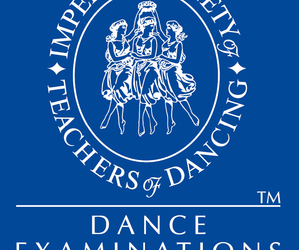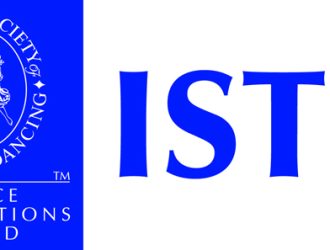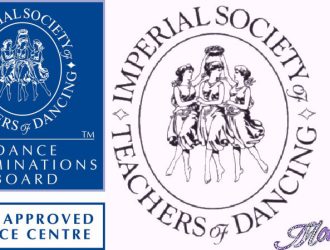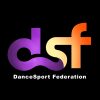Imperial Society of Teachers of Dancing
The Imperial Society of Teachers of Dancing (ISTD) is a dance teaching and examination board based in London, England, and operating internationally. Established on 25 July 1904 as the Imperial Society of Dance Teachers, it changed to its current name in 1925 and is now a registered educational charity.
Overview#
The ISTD provides training in a range of dance styles, with examination syllabi for students, and training courses for people wishing to become certified dance teachers. The work of the ISTD is organised into two main boards, one for Dancesport and the other for Theatre dance. The society also incorporates the Cecchetti Society, which exists to preserve the Cecchetti method of classical ballet training. The ISTD is an awarding body recognised by the Qualifications and Curriculum Authority and the Council for Dance Education and Training and is also a member of the British Dance Council. The ISTD is also represented on the committees of numerous other arts, dance and culture related organisations. The ISTD also hosts various competitions in many different faculties, including Modern Ballroom, LatinAmerican, Disco Freestyle, Classical Ballet and Tap Dance.
History#
The Imperial Society of Dance Teachers was formed on 25 July 1904 at the Hotel Cecil in Covent Garden, London with Robert Morris Crompton as the first President. The first ISTD congress was held in 1906 and a congress has subsequently been held every year, with the exception of a brief period during the war years. Dance Journal, now titled Dance, was first published in September 1907.
In 1924 the separate branches, which later became faculties, were formed, and in 1925 the society became the Imperial Society of Teachers of Dancing. The ISTD incorporated in 1945, with Victor Silvester in the new role of Chairman.
In 1953 the Grand Council of the ISTD was formed; it includes notable persons from many areas of British society. The Council serves to improve communication with key people in British arts and society.
The ISTD is most noted for the use of medal tests, and the ISTD format has been used as a model for similar award systems by many other dance organisations. The idea of medal tests first came from another dance teaching organisation, but it was the ISTD, which first developed the widespread use of the medal test system throughout the UK and internationally.
Today#
The present day ISTD is a government recognised dance teaching organisation and examination board, which trains and certifies teachers to deliver its syllabus to students in both private and mainstream dance education. The ISTD offers syllabi in a range of dance styles, which are typically delivered in the form of medal tests or graded examinations. An accredited awarding body, the ISTD offers qualifications that can be submitted for credit on the National Qualifications Framework. The organisation structure of the ISTD is divided into three levels, the Administrative Council, Faculty Boards and Faculty Committees.
Administrative Council#
The Administrative Council is responsible for the overall governance of the ISTD and consists of executives and elected members, headed by ISTD Chairman, Professor Christopher Bannerman. The Council is the principal policy making body of the organisation and rules on recommendations made by the faculty boards and committees, which are represented on the Council. Key administrative duties are performed by executive members, the Finance, Audit & General Purposes Committee and the Nomination & Remuneration Committee. The Administrative Council also includes the Grand Council, a group of eminent dance professionals headed by ISTD President, Peggy Spencer and honorary Life President, Dame Beryl Grey.
Faculty Boards#
The work of the ISTD is divided into two main branches; the Dancesport Faculties Board, commonly known as the Ballroom Branch, and the Theatre Faculties Board, commonly known as the Theatre Branch. These two faculty boards co-ordinate the work of the faculty committees, which are grouped to reflect the similarities between them. For example, the Dancesport board consists of dance techniques which are normally performed in a ballroom dance hall setting, both socially and competitively, whereas the Theatre board, as the name suggests, consists of dance techniques which usually have a connection to stage or film.
Faculty committees#
The ISTD consists of twelve faculty committees, which are divided between the two Faculty Boards. Each faculty committee is responsible for the technical and artistic development of a specific dance technique within the ISTD. The work of a faculty committee includes the continued development of the syllabi for the relevant dance technique, the regulation and control of examinations and the organisation of lectures, teacher training courses, seminars and other events.
Faculties#
Dancesport Faculties Board#
- Club Dance Faculty
- Disco/Freestyle/Rock’n’Roll (DFR) Faculty
- Latin American Faculty
- Modern Ballroom Faculty
- Sequence Faculty
Theatre Faculties#
- Cecchetti Society Classical Ballet
- Classical Greek Dance
- Classical Indian Dance
- Imperial Classical Ballet
- Modern Theatre Dance
- National Dance
- Tap Dance
Examinations#
The ISTD is primarily a dance examination board, with teacher members delivering its syllabi to students in both private and mainstream education. The majority of people who study the ISTD syllabus are people pursuing dance as a leisure activity and the organisation provides a structured examinations system that caters for pupils from beginner to professional level. At the higher levels, ISTD teachers can provide training for people wishing to pursue dance as a profession, either as a performer or dance teacher. Typically, most subjects have a series of graded examinations. These progress from Primary and up through numbers Grades (Grade 1, Grade 2, etc.), with Vocational graded examinations at Intermediate, Advanced 1 and Advanced 2 levels. Some subjects have differing examination systems, some offering medal tests and other awards.
Grade exams#
The grade system is especially adapted to different ages of pupils, and as a basis for dance as an activity in schools or other similar institutions. Grade Examinations may be taken in Classical Ballet (Cecchetti and Imperial methods), Modern Theatre, Tap, National Dance, Classical Greek, South Asian (Kathak and Bharatanatyam), Modern Ballroom, Latin American, Disco Freestyle and Classical Sequence. Grades 1-6 are accredited by Ofqual, but some Faculties have additional Grades prior to Grade 1, that is, Pre-Primary and Primary.
Class exams#
Class Examinations may be taken in Classical Ballet (Cecchetti and Imperial methods), Classical Greek and Modern Theatre.
Medal tests#
These tests may be taken in Modern Ballroom, Latin American,Sequence, Disco Freestyle, Rock ‘n’ Roll, Country & Western, Classical Greek, Tap and National. The levels progress from Bronze to Silver, Gold, Gold Star and higher awards for Dancesport medals.
Vocational grades#
The Vocational Grades are accredited by Ofqual and include Intermediate Foundation, Intermediate, Advanced 1 and Advanced 2. These examinations form a cohesive bridge between the work covered in the Grades and the work of the professional examinations.
Professional examinations#
Dancers who have achieved a high level examination pass in an ISTD dance subject can progress into teacher training with the organisation. The teacher training is provided through approved dance centres and consists of both theory and practical examinations designed to demonstrate the candidates ability and knowledge to teach dance. People who successfully complete the training become registered teachers of the ISTD and may enter students for examinations in the dance subject for which they have qualified. Some ISTD teacher may progress to further their qualifications further and gain qualifications in other branches of the society. There are various professional examinations, depending on where candidates live.
- European Union Theatre Examinations: Teachers entering candidates for ISTD examinations need to gain the Diploma in Dance Instruction, followed by the Diploma in Dance Education and then may choose to progress to Licentiate and Fellowship.
- Rest of the World Theatre Examinations: For the rest of the world the qualifications are the Associate and the Associate Diploma. Teachers can enter students for examinations following their Associate examination and once they have obtained their Associate Diploma can then choose to progress to Licentiate and Fellowship.
- Global Dancesport Examinations: For all Dancesport examinations, regardless of country, the Student Teacher and Associate qualifications can be taken. Candidates within the European Union can also take Foundation in Dance Instruction and Certificate in Dance Education in some dance genres if they wish. Following Associate, candidates may choose to progress to Licentiate and Fellowship.




